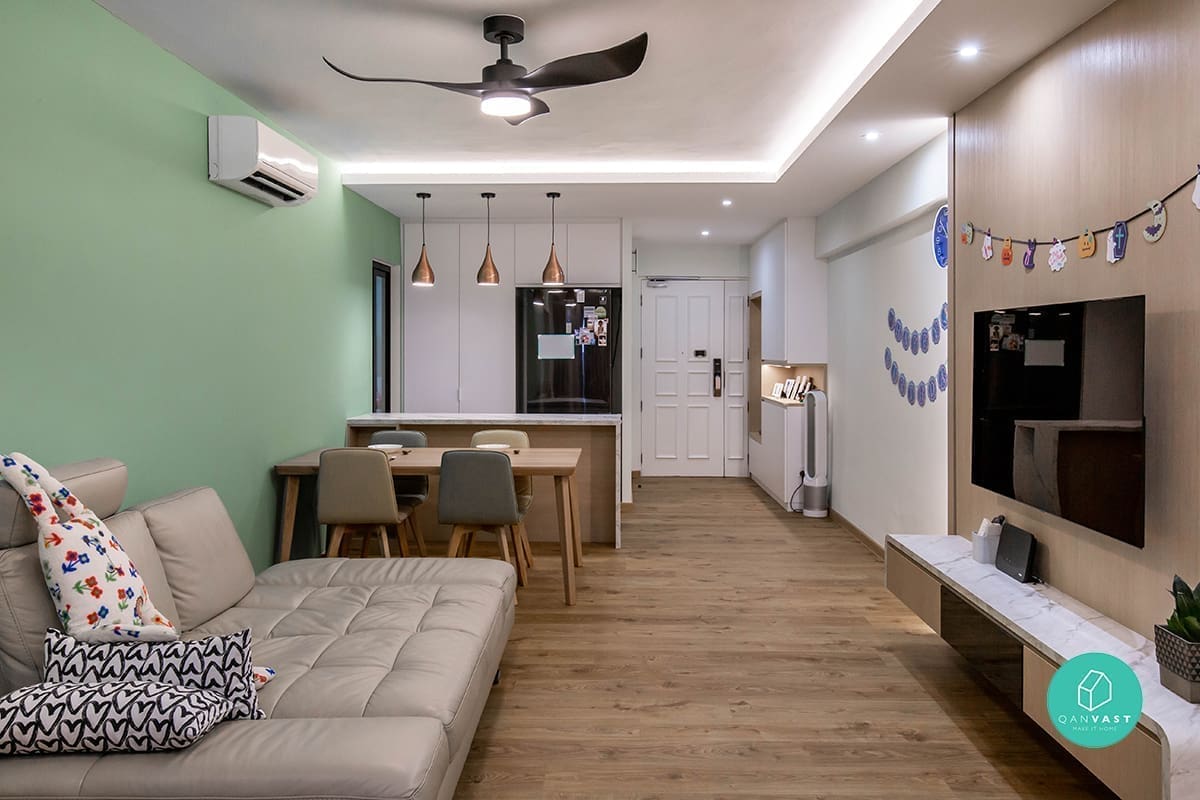Table of Contents
Toggle
I. Introduction
Interior design plays a crucial role in creating a welcoming and aesthetically pleasing environment within our homes. It reflects our personal style and enhances our daily living experiences. Traditional interior design, in particular, embraces a classic and timeless approach, celebrating the beauty of craftsmanship, rich materials, and elegant details. It creates a sense of warmth, familiarity, and refinement that stands the test of time.II. Key Elements of Traditional Interior Design
- Colors and Patterns: Traditional interior design often features warm and neutral color palettes, such as shades of beige, cream, and earth tones. These colors create a soothing and inviting atmosphere. Additionally, classic patterns and prints like floral, damask, or stripes are frequently used in wallpapers, upholstery, and draperies, adding depth and character to the space.
- Furniture and Accessories: Traditional furniture styles are characterized by their graceful lines, intricate carvings, and attention to detail. Pieces such as wingback chairs, Queen Anne or Chippendale-style sofas, and claw-foot tables are common in traditional design. Ornate accessories like mirrors with gilded frames and decorative items, such as porcelain vases or antique clocks, further enhance the traditional ambiance.
- Materials and Textures: Traditional interior design incorporates rich and natural materials to create a sense of luxury and timelessness. Wood, particularly dark or warm-toned varieties like mahogany or cherry, is commonly used for furniture, flooring, and cabinetry. Fabrics like velvet, silk, and damask bring texture and elegance to upholstered pieces. Soft and plush rugs made of wool or silk provide comfort underfoot while adding a layer of warmth to the room.
III. Creating a Traditional Living Room
The living room is often the focal point of a home, where families gather to relax and entertain guests. To create a traditional living room:- Wall Colors and Wallpaper: Opt for warm, neutral tones like beige or taupe as a base color. You can also consider wallpaper with classic patterns like toile or damask to add visual interest to the walls.
- Furniture Selection: Choose traditional furniture pieces with graceful curves and ornate details. A plush sofa with rolled arms and a wingback chair paired with a tufted ottoman can anchor the space. Don’t forget to incorporate a coffee table and side tables with carved legs and intricate designs.
- Window Treatments: Install floor-length curtains or draperies in luxurious fabrics like silk or velvet. Consider adding valances or cornices for an extra touch of elegance. If privacy isn’t a concern, sheer curtains can soften the natural light.
- Lighting and Chandeliers: Install a statement chandelier as the centerpiece of the room to create a grand and sophisticated atmosphere. Supplement with table lamps and sconces to provide warm and ambient lighting.
- Accessories and Decorative Items: Complete the traditional look with decorative items such as antique vases, framed artwork, and ornate mirrors. Layer the space with plush throw pillows, soft rugs, and cozy blankets for a welcoming touch.
IV. Traditional Bedroom Design Ideas
The bedroom is a sanctuary for rest and relaxation. To achieve a traditional bedroom design:- Bed Frame and Headboard: Choose a bed frame and headboard with intricate details and luxurious upholstery. Canopy beds or sleigh beds are popular choices in traditional bedroom design.
- Bedding and Linens: Dress the bed with high-quality linens, including crisp sheets, duvet covers, and plush pillows. Opt for classic patterns like stripes or floral designs to complement the traditional theme.
- Window Coverings: Install curtains or draperies in soft fabrics that frame the windows elegantly. Consider layering with sheer curtains for added privacy and a touch of romance.
- Dressers and Nightstands: Select traditional-style dressers and nightstands with carved details and antique-inspired hardware. They provide ample storage while maintaining the overall aesthetic.
- Lighting and Lamps: Incorporate table lamps with ornate bases and fabric shades on nightstands. Install a beautiful chandelier or pendant light as the centerpiece to create a warm and inviting ambiance.

V. Traditional Kitchen and Dining Room Design
The kitchen and dining room are spaces where families gather for meals and socialize. To achieve a traditional design in these areas:- Cabinetry and Countertops: Choose kitchen cabinetry with raised panel doors and decorative molding. Opt for timeless materials like hardwood or painted finishes. Granite or marble countertops add a touch of luxury.
- Flooring and Backsplash: Install hardwood flooring or classic tiles like ceramic or porcelain. For the backsplash, consider subway tiles, mosaic patterns, or even hand-painted tiles with traditional motifs.
- Appliances and Fixtures: Opt for appliances with a classic or vintage-inspired look to seamlessly blend with the traditional design. Consider fixtures with ornate details, such as faucets with intricate handles or pendant lights with antique finishes.
- Dining Furniture and Tableware: Choose a dining table and chairs that exude elegance and sophistication. Wooden tables with carved details and upholstered chairs are popular choices. Complete the look with traditional tableware, such as fine china and crystal glassware.
- Lighting and Chandeliers: Install pendant lights or a chandelier above the dining table to create a focal point and enhance the traditional atmosphere. Adjustable sconces or under-cabinet lighting can provide task lighting in the kitchen.
VI. Timeless Traditional Interior Design Tips
- Incorporating Antiques and Vintage Pieces: Adding antique or vintage furniture and accessories to your traditional design can bring a sense of history and uniqueness to your space. Look for heirloom pieces or explore local antique markets to find hidden gems.
- Balancing Traditional and Modern Elements: Traditional design doesn’t have to be completely devoid of modern touches. Incorporate some contemporary elements like abstract artwork or sleek lighting fixtures to create a harmonious blend of old and new.
- Layering Textures and Patterns: To add depth and visual interest to your traditional space, layer different textures and patterns. Mix and match fabrics, rugs, and decorative pillows to create a cozy and inviting atmosphere.
- Attention to Detail and Finishing Touches: Traditional design thrives on intricate details. Pay attention to finishing touches like decorative trims, tassels, and fringe on curtains and upholstery. Add decorative molding or wainscoting to walls for an extra touch of sophistication.
- Personalizing the Space: While traditional design has its guidelines, don’t forget to infuse your own personality and style into the space. Display family photos, incorporate meaningful artwork, or showcase collections that reflect your interests and passions.
VII. FAQs
How can I modernize a traditional interior design? While maintaining the traditional foundation, you can incorporate modern elements through artwork, lighting fixtures, or furniture accents. Strike a balance between old and new to create a harmonious blend. What are some popular color schemes for traditional spaces? Traditional color schemes often include warm neutrals like beige, cream, and earth tones. You can also incorporate classic colors like deep reds, blues, or greens for added richness. Can traditional design work in small spaces? Yes, traditional design can work in small spaces. Opt for furniture with a smaller footprint and focus on maximizing storage to keep the area organized and functional. How do I find quality traditional furniture? Look for reputable furniture stores that specialize in traditional styles. You can also explore antique markets, estate sales, or online platforms for unique and high-quality pieces. Are there any budget-friendly options for traditional interior design? Absolutely! You can find budget-friendly options for traditional interior design by exploring thrift stores, consignment shops, or online marketplaces. You can also consider refurbishing or upcycling existing furniture to give them a traditional look without breaking the bank. In conclusion, embracing timeless traditional interior design can truly transform your home into a haven of elegance and comfort. By incorporating the rich colors, intricate details, and luxurious materials synonymous with traditional design, you can create a space that stands the test of time while reflecting your personal style.
If you’re ready to embark on this exciting journey of revamping your home with timeless traditional design, consider enlisting the expertise of Ovon-D Interior Design. Our team of skilled designers understands the nuances of traditional aesthetics and can help you bring your vision to life. From selecting the perfect furniture and accessories to curating a cohesive color palette, Ovon-D will guide you through the process, ensuring every detail is carefully considered.
Don’t settle for ordinary when you can have extraordinary. Transform your home with Ovon-D Interior Design and experience the timeless beauty and charm of traditional interiors. Visit our website to learn more and schedule a consultation.
In conclusion, embracing timeless traditional interior design can truly transform your home into a haven of elegance and comfort. By incorporating the rich colors, intricate details, and luxurious materials synonymous with traditional design, you can create a space that stands the test of time while reflecting your personal style.
If you’re ready to embark on this exciting journey of revamping your home with timeless traditional design, consider enlisting the expertise of Ovon-D Interior Design. Our team of skilled designers understands the nuances of traditional aesthetics and can help you bring your vision to life. From selecting the perfect furniture and accessories to curating a cohesive color palette, Ovon-D will guide you through the process, ensuring every detail is carefully considered.
Don’t settle for ordinary when you can have extraordinary. Transform your home with Ovon-D Interior Design and experience the timeless beauty and charm of traditional interiors. Visit our website to learn more and schedule a consultation.



